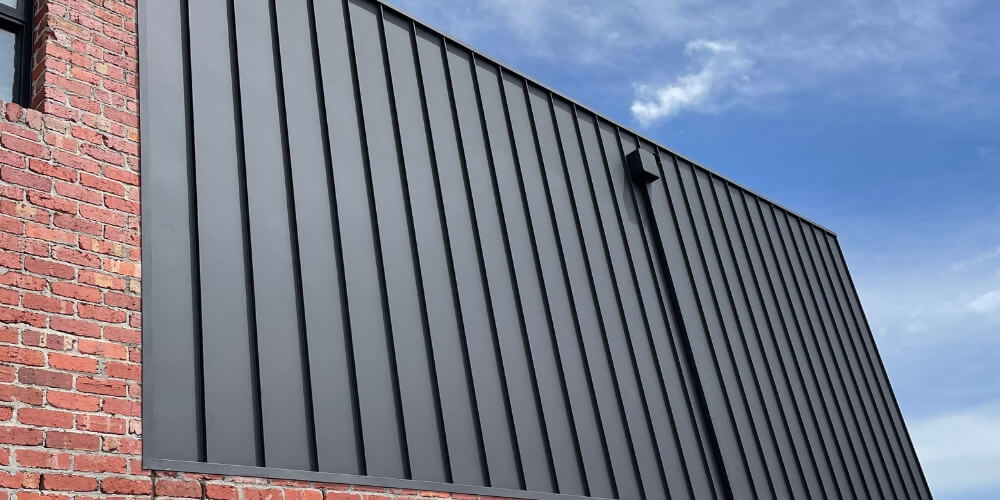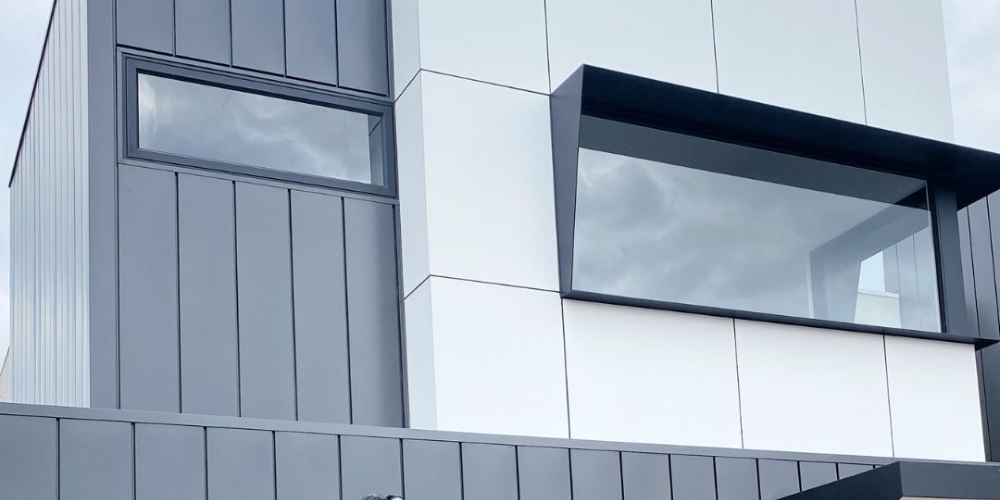7 Tips for Maintaining Snap Lock Cladding in Harsh Climates
We know we’ve been stressing enough how durable Snap Lock cladding can be, but let’s face it – even the toughest materials need a little TLC, especially in harsh climates. From scorching summers to freezing winters, your cladding faces it all.
As roofing and cladding experts in Melbourne for almost two decades now, we at Total Roofing and Cladding ensure that we always provide every client with the best solutions. Our commitment to excellence and attention to detail ensure that your Snap Lock cladding not only withstands the test of time but also looks stunning for years to come.
some of the most unpredictable weather patterns in the world, it’s crucial to take proactive steps to protect your investment. That’s why, in this blog series, we’re excited to share our expertise and insider tips on how to maintain and care for your Snap Lock cladding in the face of Australia’s diverse climate challenges.

Lance Mathews
In This Article

Challenges of Harsh Climates on Cladding
Harsh climates can strain seam cladding, testing its resilience against the elements. Whether it’s the relentless heat of summer, the biting cold of winter, or the unforgiving forces of storms, your cladding takes a beating.
Temperature Extremes
Snap Lock cladding confronts the issue of dealing with severe temperatures. In hot conditions, the material may expand, resulting in warping or buckling. In contrast, cold temperatures can cause the cladding to compress, compromising its structural integrity.
Water Ingress During Heavy Rainfall
Harsh climates can bring severe rains, increasing the risk of water entry. If Snap Lock cladding is not properly maintained, it may develop leaks and water seepage, thereby causing structural damage and jeopardising the cladding’s effectiveness.
UV Radiation and Fading
Prolonged exposure to direct sunshine and UV radiation in severe areas can cause fading and discolouration of Snap Lock cladding. This impairs the aesthetic appeal and may suggest underlying material degeneration, demanding prompt maintenance.
Storm Damage with High Winds
Storms and heavy winds are typical in hostile areas, and Snap Lock cladding must endure the forces they bring. The danger of structural damage, panel loosening, or even detachment during extreme weather events is a serious concern that must be carefully considered when developing maintenance procedures.
Importance of Regular Maintenance
Regular maintenance is not just a nicety; it’s necessary to ensure the longevity and effectiveness of Snap Lock cladding, especially in harsh climates. Here’s why giving your cladding some regular TLC is so crucial:
Preventing Costly Repairs
Regular maintenance enables the early diagnosis and repair of minor faults before they become severe. Addressing minor repairs as soon as possible can save you thousands of dollars in cladding damage costs.
Preserving Aesthetic Appeal
Snap Lock cladding substantially improves the exterior attractiveness of your property. Regular cleaning, inspections, and upkeep help preserve its original appearance, ensuring your building looks crisp and well-maintained.
Enhancing Structural Integrity
Cladding can be put under a variety of strains in harsh regions. Regular inspections and maintenance activities, such as joint sealing and loose panel repair, help to maintain structural integrity and prevent problems like leaks or instability.
Protecting Against Weather Extremes
Harsh climates subject your cladding to harsh weather conditions ranging from blistering heat to frigid cold. Regular maintenance, such as applying protective coatings, prepares your cladding to survive these pressures and prevents material degradation.
Maximising Longevity
Snap Lock cladding is a long-lasting investment that requires regular maintenance to ensure it lives up to its full potential. Well-maintained cladding stands up to the test of time, offering long-term protection for your property.
Boosting Property Value
A well-maintained exterior increases the overall value of your property. Regularly maintained Snap Lock cladding protects your investment and increases the market value of your home or structure.

How To Maintain Snap Lock Cladding in Harsh Climates
Tip #1: Conduct Regular Visual Inspections
Conduct regular visual checks to detect any signs of damage or wear. Look for cracks, loose panels, or discolouration and fix them right away to prevent future degradation.
Tip #2: Apply Effective Cleaning Procedures
Do a regular cleaning schedule based on the cladding material. Use a proper cleaning solutions and methods to remove dirt, debris, and pollutants, preventing the accumulation of substances that can damage the cladding over time.
Tip #3: Timely Repair of Damages
Any damages that have been identified should be addressed quickly. Whether it’s a minor fracture or a loose panel, early repairs keep the problem from worsening and assist in maintaining the cladding’s structural integrity.
Tip #4: Seal Joints and Seams
Harsh conditions frequently cause heavy rains. Ensure that all joints and seams are adequately sealed to avoid water ingress. This proactive method guards against potential water damage and increases the cladding’s resistance.
Tip 5: Apply Weather Resistant Coatings
Consider using weather-resistant coatings designed for your unique climate. These coatings protect against UV radiation, severe temperatures, and other environmental conditions affecting the cladding’s look and performance.
Tip #6: Seasonal Precautions
Tailor your maintenance strategy to seasonal fluctuations. Implement winter-specific preparations like clearing snow and ice and summer-specific procedures like checking for heat damage. Adapting to seasonal difficulties provides year-round safety.
Tip #7: Professional Maintenance Checks
Schedule frequent professional maintenance checks, especially if your property is in a location prone to severe weather. Professionals may conduct comprehensive assessments, detect hidden concerns, and make expert suggestions on the best course of action.
Frequently Asked Questions
It is critical to use cleaning chemicals designed specifically for the material of your cladding. Do not use harsh chemicals that can cause damage. Always follow the manufacturer’s cleaning product instructions.
Regular visual inspections should be performed at least twice a year. Still, more frequent examinations are recommended, particularly following severe weather occurrences. Promptly correcting any recognised harm is critical to avoiding future problems.
Winter preparations may involve:
- Clearing snow and ice.
- Inspecting for indicators of freezing-related damage.
- Ensuring that joints and seams are properly sealed to avoid water infiltration.
Signs of substantial damage, continuous leaks, or apparent degradation may signal the need for professional help. Furthermore, you should see an expert if you need clarification on your cladding’s condition or maintenance requirements.
Conclusion
Maintaining Snap Lock cladding in tough conditions requires being proactive and staying on top of maintenance tasks. Following our advice, you can keep your cladding sturdy and resilient even in adverse weather conditions.
Remember that your cladding represents a considerable investment in the appearance and protection of your property. Taking the time to care for it properly will benefit you in the long run by keeping its integrity and increasing the value of your house.
So, don’t wait until problems arise – start implementing these maintenance strategies today. Your Snap Lock cladding will thank you for it, and you’ll enjoy knowing that your property is well-prepared to weather any storm.
Please take action now and keep your cladding looking its best for years!

